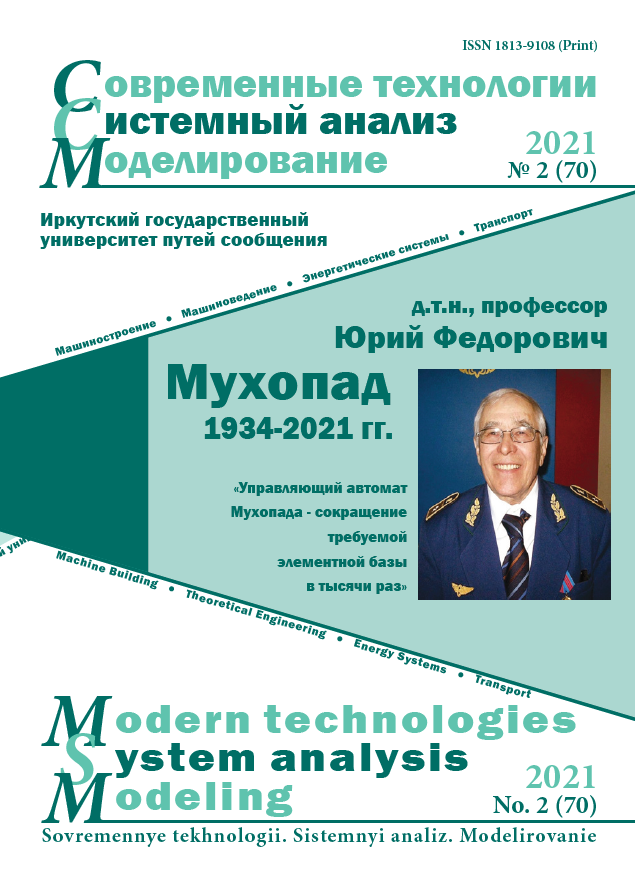Development of scientific and technical support, monitoring and work production control on the arrangement of a linear transportation construction
Keywords:
transport, linear structures, scientific and technical support of construction, functional quality, system of construction operation, systematic control, quality management of construction projectsAbstract
The functional quality of construction products, including linear transport structures, implies the suitability of these facilities for use at the established (functional and technological) purpose, with the obligatory observance of the current industry indicators of operational efficiency, reliability and safety. Ensuring efficiency, reliability and safety indicators is a constantly urgent task for the functioning transport infrastructure facilities. The formation of functional quality is accompanied by the synthesis and functioning of numerous structural elements that are part of a multi-component, complex and dynamically variable system of construction production. As a result of these features, tools for the methodological improvement of approaches for managing the functional quality of transport facilities remain relevant. This article proposes a methodological basis for applying a systematic approach to the formation and control of functional quality indicators in the context of a scientific and technical support. The process of a scientific and technical support at the main stages of the life cycle of the construction products under consideration is presented as an enlarged algorithm of data control and the development of management actions when unacceptable deviations from the established (normalized) level of functional quality of the construction products are identified. The methodological and practical basis of functional quality management is a systematic approach to the control of the processes of the formation and maintenance of the quality of construction objects of transport infrastructure and the implementation of an algorithm of a targeted impact on adverse factors that can result in deviations from the established indicators. The main result of the research is the concept of systematic and continuous detection of conditions of the compliance of functional quality indicators with initial values and the proposal to switch to preventive information modeling of the features of properties and possible deviations from the designed functional quality indicators of linear transport facilities, implemented as part of the corresponding scientific and technical support program. The scope of the research results can be extended to procedures and measures on the formation and updating of functional quality indicators within the information models of the functional quality of transport infrastructure facilities.
References
Абакумов Р.Г., Наумов А.Е., Зобова А.Г. Преимущества, инструменты и эффективность внедрения технологий информационного моделирования в строительстве // Вестник БГТУ им. В.Г. Шухова. 2017. № 5. С. 171–181.
Семечкин А.Е. Системный анализ и системотехника. М. : SvS-Аргус, 2005. 536 с.
Неумолотов О.Б. Системный подход при решении задач в области капитального строительства. Воронеж : ВГТУ, 2002. 332 с.
Кузахметова Э.К., Григоренко Н.И. Поднятие научного уровня технического сопровождения проектирования, строительства и реконструкции инженерных сооружений // Евразийский союз учёных. 2016. № 2-4(23). С. 64–65.
Морозов Д.В. Методы определения надежности организационно-технологических решений при строительстве и реконструкции железных дорог с позиций системотехники : дис. канд. техн. наук. М. : 2004. 176 с.
Абакумов Р.Г., Грищенко Е.Н., Стрекозова Л.В. Теоретические аспекты анализа и оценки организационно-технологических рисков в строительстве // Инновационная наука. 2016. № 5. С. 10–12.
Гинис Л.А. Обзор методов научного прогнозирования // Изв. Южн. федер. ун-та. Технические науки. 2009. Тем. вып. С. 231–236.
Бадиева В.В. Устройство железнодорожного пути: учебное пособие. М. : УМЦ по образованию на ж.-д. трансп., 2019. 240 c.
Шабалина Л.Н. Организация и технология строительства железных дорог. М. : Маршрут, 2006. 255 c.
Тарасова Е.Н. Анализ взаимодействия комплексов работ по возведению линейной основы железной дороги с це-лью повышения результативности строительства : дис. канд. техн. наук. М. : 1995. 162 с.
Скворцов А.В., Сарычев Д.С. Жизненный цикл проектов автомобильных дорог в контексте информационного моделирования // САПР и ГИС автомобильных дорог. 2015. № 1(4). С. 4–14.
Куприяновский В.П. и др. Цифровая железная дорога – ertms, bim, GIS, PLM и цифровые двойники // Современ-ные информационные технологии и ИТ-образование. 2017. Т. 13. № 3. С. 129–166.
Баранник С.В. Применимость BIM-технологий в дорожной отрасли // САПР и ГИС автомобильных дорог. 2015. № 1(4). С. 24–28.
СП 333.1325800.2017. Информационное моделирование в строительстве. Правила формирования информационной модели объектов на различных стадиях жизненного цикла. М. : М-во строительства и жилищно-коммун. хозяйства Рос. Федерации. 2017. 40 с.
Быкова Н.М., Баранов Т.М., Толстиков Е.О. Развитие методики оценки грузоподъемности мостов с использова-нием мобильных автоматизированных систем мониторинга // Транспортные сооружения. 2015. № 4. URL: https://t-s.today/PDF/01TS415.pdf (дата обращения 18.04.2021).
Веревкина О.И. О гибридном методе прогнозирования рисков на железнодорожном транспорте на основании общего логико-вероятностного метода // Изв. Петерб. ун-та путей сообщ. 2017. Т. 14. № 4. С. 615–627.
Веревкина О.И. Результаты применения гибридного метода оценки функциональных рисков нарушения безопас-ности движения на региональном и линейном уровнях в хозяйстве пути // Надежность и качество сложных систем. 2019. № 1 (25). С. 106–117.
Веревкина О.И. О системе оценки рисков в области функциональной безопасности движения поездов // Мир транспорта. 2017. Т. 15. № 6 (73). С. 206–221.


